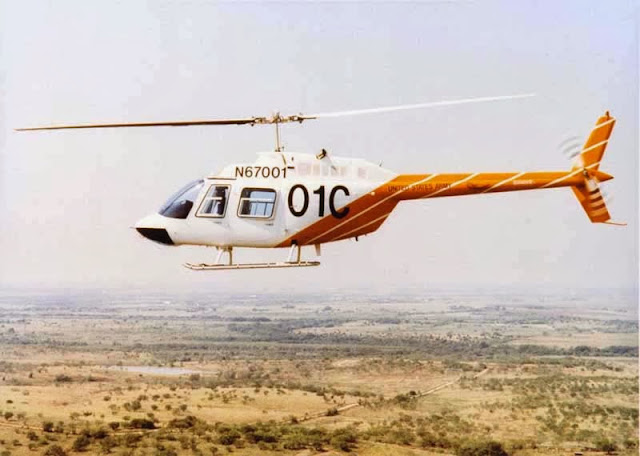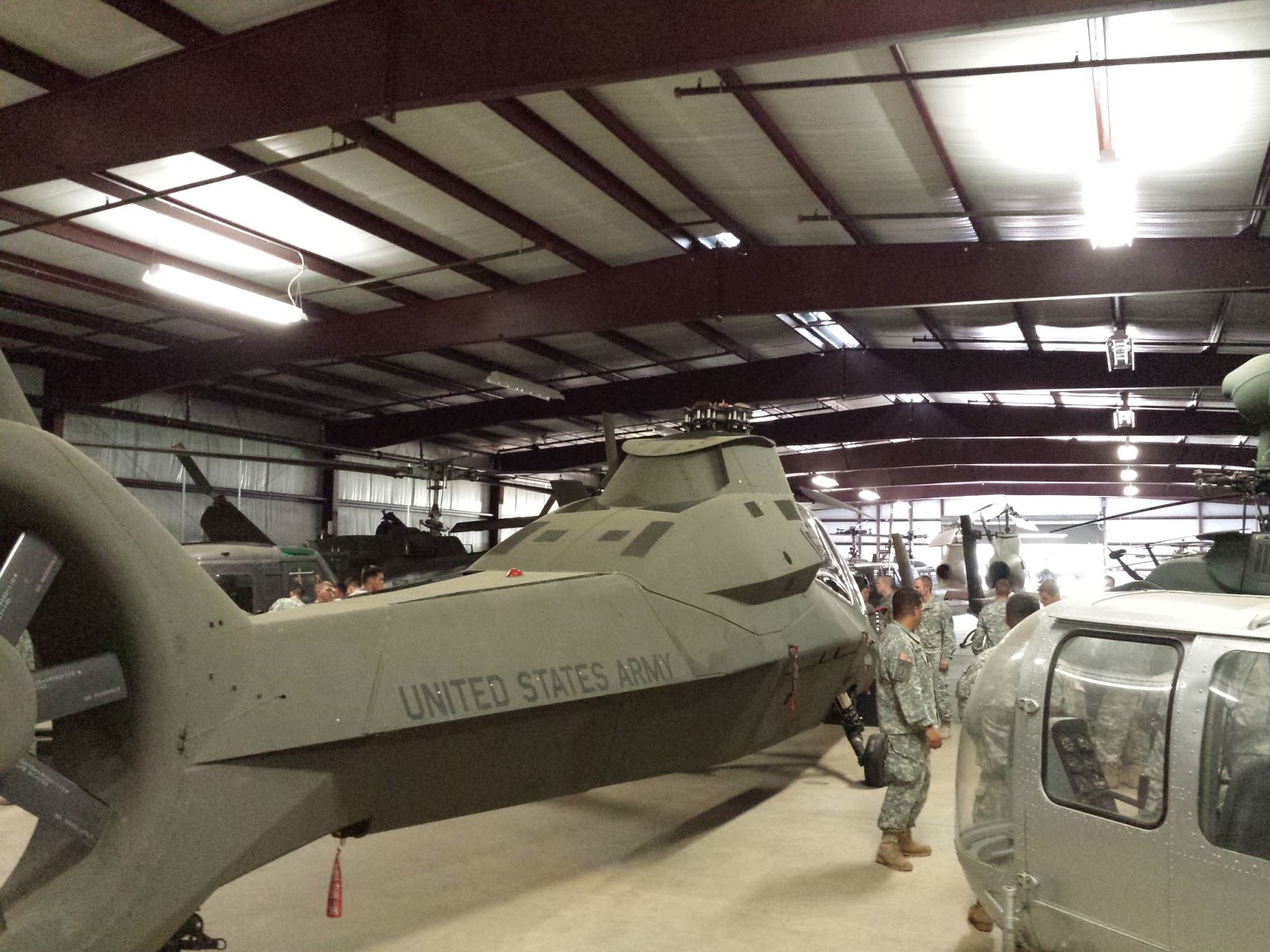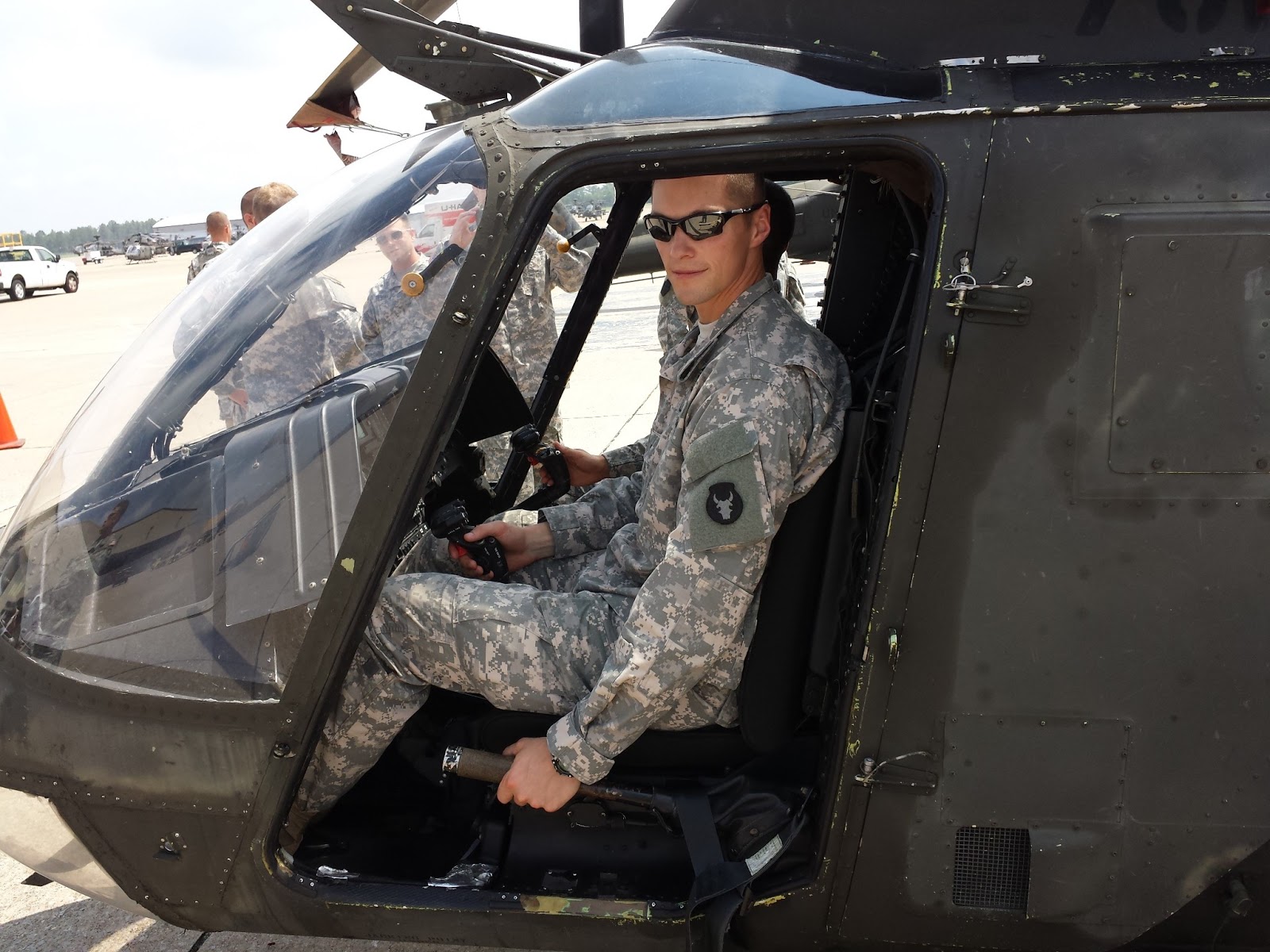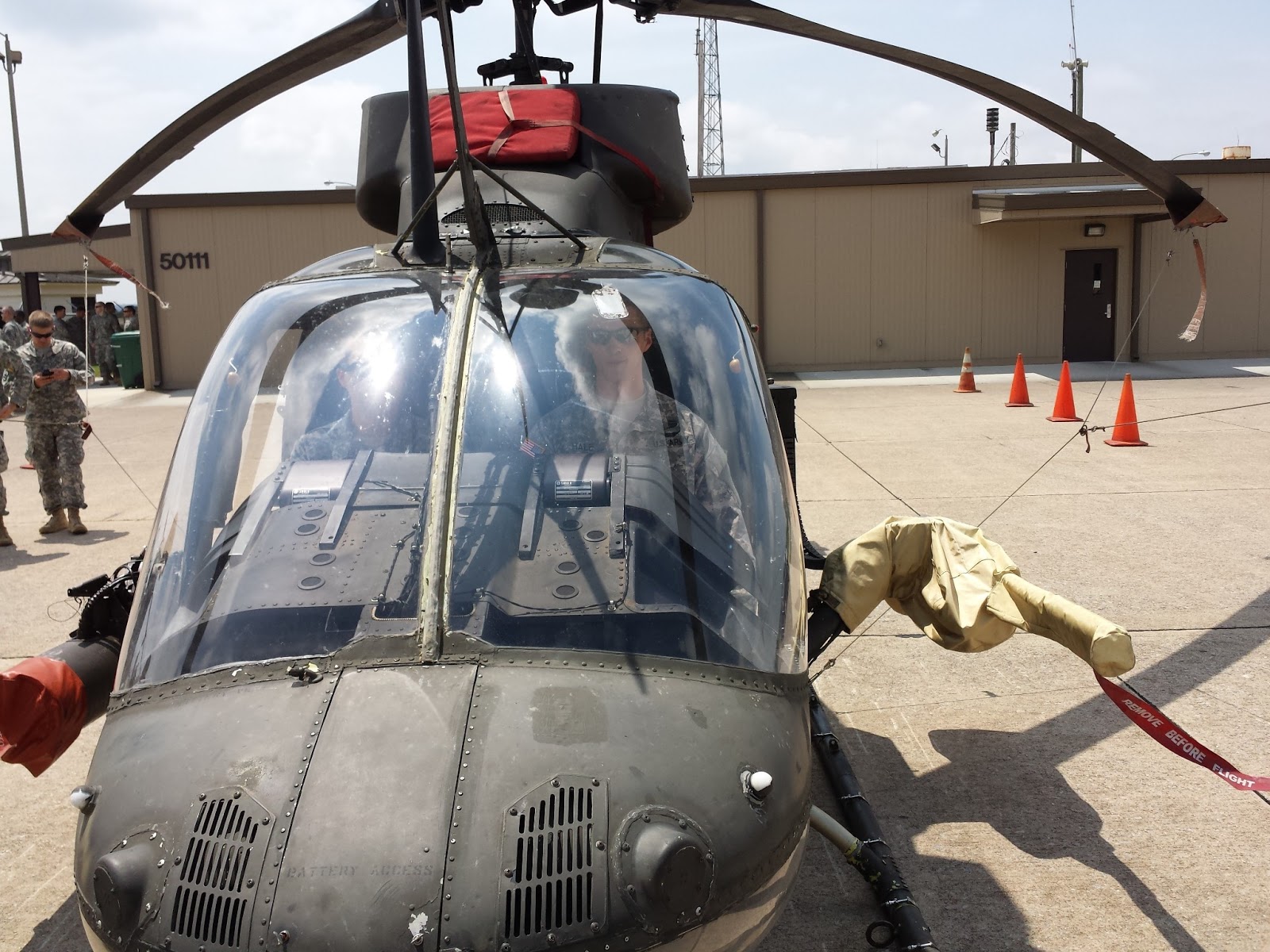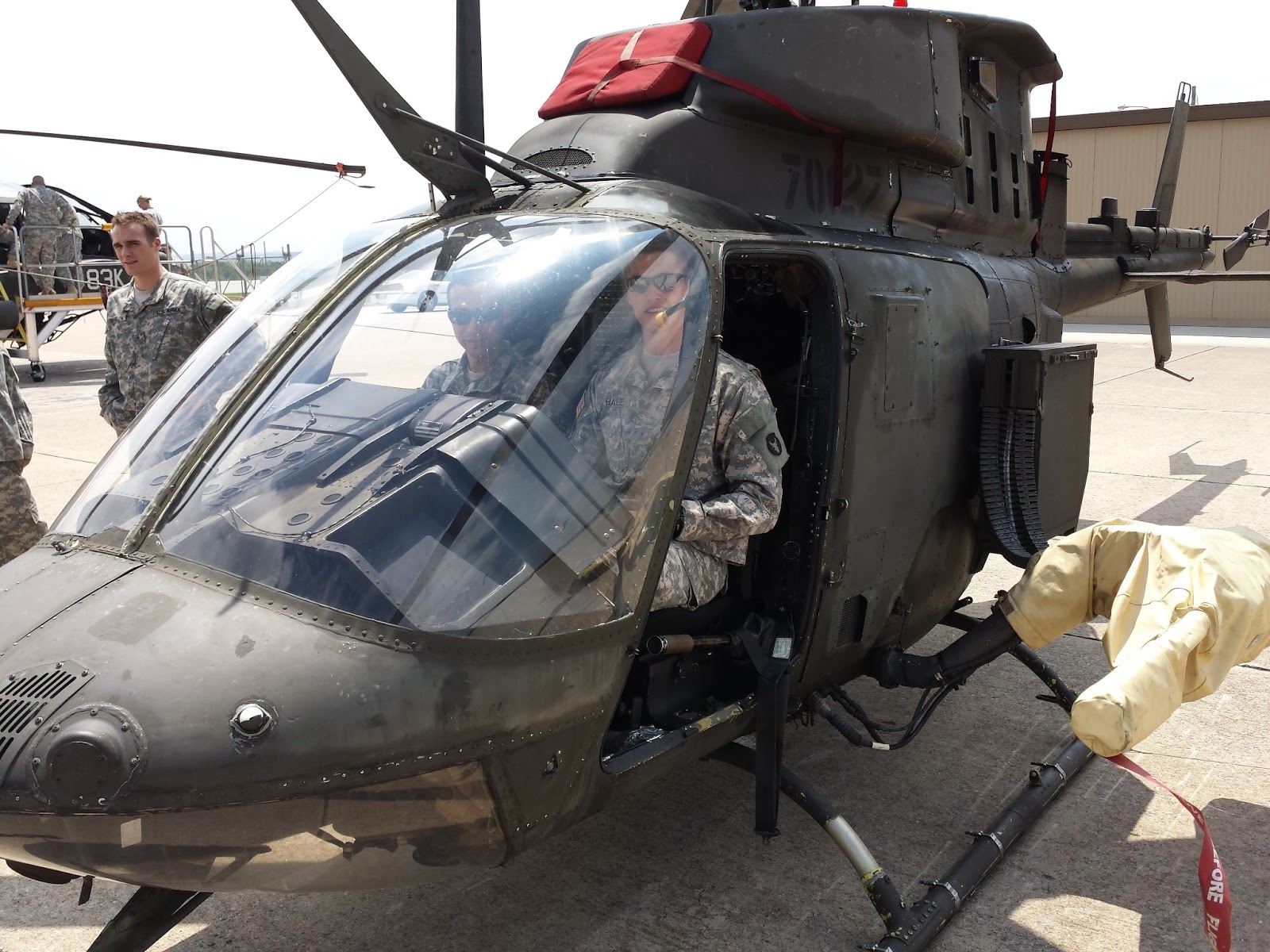Quite a few weeks have passed since I last updated my blog. Please forgive my absenteeism, but I've been a bit preoccupied.
When I last left off I was ready to head off to Warrant Officer Candidate School. Well, I made it through, and it was, and wasn't, what I expected. But what did I honestly expect? I expected it to be stressful, which it was. I expected it to get little sleep, which I did, and I expected it to be frustrating, which it was. What I didn't expect was to what extent it would be frustrating.
Throughout the course I kept thinking to myself, "How am I going to explain this course to people when I get out?" The answer came to me about 4 weeks in. I can sum up the entire course in one word: RIDICULOUS!
I will do my best to describe Warrant Officer Candidate School (WOCS) to you in this post, but I doubt I'll do it any justice. Also, as ridiculous as the course was/is, I did meet some great people and had fun at a few points so what's written here is more of what stuck out to me as ridiculous. Overall, it was a good experience.
If anyone is looking to go to Warrant Officer School, I will do my best to outline some things to keep in mind while you're here so you can do well in the course.
All right, that's enough qualifying, let's get down to business.
Warrant Officer Candidate School is either a five and a half week, or a seven week, course that takes an enlisted person (see ranks below) and makes them a warrant officer in the Army.
Warrant Officer is a unique and seldom heard of rank in the military, and we're located between the enlisted ranks and the Commissioned Officer ranks. I won't go into great detail, but I will say that Warrant Officers are technical experts in their field, and Commissioned Officers are general officers who can basically work in any field. All you need to know is this, if you are an aviator, and you want to focus on flying, Warrant Officer is the route you want to take.



Let's dive into what WOCS is actually like. If you're in the five and a half week course it means you were an E-5 or higher on the enlisted rank chart. If you were in the seven week course you were an E-4 or below, or got screwed as an E-5 and up and just got stuck in the seven week course. Why does this matter? Sergeants have been in the Army awhile and know many of the simple things you'll do during school. The seven week course includes a lot of high school to flight school people who don't have much military experience and need to work on their marching and other basic Army skills. In either case, however, the school is tough.
The entire school is centered around a manual called the "WOCSOP," Warrant Officer Candidate Standard Operating Procedure. This manual has every possible situation you could think of encountering during school along with an exact procedure on how to handle that situation. The following is an excerpt from the "Dining" portion of the SOP:
 "Center your main entrée plate from left-to-right and ground against the tray edge closest to you. Place your knife approximately one-inch away from the right side of your main entrée plate, grounded to the tray edge closest to you, parallel
to the outside tray edge with the cutting edge facing your main entrée plate. Place your spoon approximately ½ inch to the right of your knife with the bottom grounded to the tray edge
closest to you and the utensil parallel to the outside edge of the tray. Place one fork approximately one-inch away from the left
side of your main entrée plate, grounded to the tray edge closest to you and parallel to the outside tray edge. Place the second fork approximately ½ inch to the left of your first fork with the bottom grounded to the tray edge closest to you and
the utensil parallel to the outside edge of the tray. The fork on the outside is considered a salad fork and the fork nearest your main entrée plate is considered your dinner fork, both utensils should be used as such. Ground each drink glass along the top right edge of the tray with an approximate two-inch separation between them. When you have an auxiliary bowl or dish, such as a salad or dessert, ground it to the upper left corner of the tray. If you have a second auxiliary bowl or dish, ground it
below the other bowl or dish."
"Center your main entrée plate from left-to-right and ground against the tray edge closest to you. Place your knife approximately one-inch away from the right side of your main entrée plate, grounded to the tray edge closest to you, parallel
to the outside tray edge with the cutting edge facing your main entrée plate. Place your spoon approximately ½ inch to the right of your knife with the bottom grounded to the tray edge
closest to you and the utensil parallel to the outside edge of the tray. Place one fork approximately one-inch away from the left
side of your main entrée plate, grounded to the tray edge closest to you and parallel to the outside tray edge. Place the second fork approximately ½ inch to the left of your first fork with the bottom grounded to the tray edge closest to you and
the utensil parallel to the outside edge of the tray. The fork on the outside is considered a salad fork and the fork nearest your main entrée plate is considered your dinner fork, both utensils should be used as such. Ground each drink glass along the top right edge of the tray with an approximate two-inch separation between them. When you have an auxiliary bowl or dish, such as a salad or dessert, ground it to the upper left corner of the tray. If you have a second auxiliary bowl or dish, ground it
below the other bowl or dish."
I can't lie, when you read through this book it's comical to think that we went through all of this stuff. That excerpt above is just a sliver of all that was in the manual. It also covers how to make your bed, how to fold your socks, how to stencil your name on all your stuff as you previously saw, and when you can and cannot run in the company area. There is a lot of information in that manual and you are constantly tested on it and punished for now following it exactly. Is there a point to it? Absolutely, this type of tedium teaches attention to detail, a quality every officer in the Army should demonstrate, but at the time it's just annoying and induces quite a bit of stress.

A lot of people ask, "Was it like basic training?" Yes and no is my best answer. In basic training Drill Sergeants run the show. They are what everyone associates with "Boot Camp." (Picture is of a Marine Drill Instructor, but it serves my point) The Drill Sergeant's job is to ensure you learn the basic's of becoming a soldier. Things like: how to march, how to shoot, how to move when the enemy is shooting at you, throwing grenades, and enough about fighting to not die in a conflict. Drill Sergeants wear a signature brown round hat.

In WOCS, TAC Officers (called TACs) run the show. TAC stands for Training, Advising, and Counseling Officer. Their job is quite different from a Drill Sergeant's in that they aren't there to teach you much, more to assess. They apply stress and assess how you deal with it. TACs wear a signature black baseball hat.
The difference between Basic Training and WOCS lies in the purpose of the two courses. The purpose of basic training is to break you down, meaning to get rid of your civilian habits and thoughts, and build you up into a fully functioning soldier. Let me emphasize the building you up portion of Basic Training for this is a key difference in the two courses.
If you're attending WOCS, you've already been broken down and built up. The course is geared more at assessing your team-working ability, as well as how well you handle stress. The entire course is designed to stress you out, not to build you up, so if you're planning on going through it check your motivations behind your decision or you will be in a world of hurt as you go through.
So how did they stress you out? In a nutshell, give you more to do than you can accomplish on your own and not enough time to accomplish it all. What does this do? It forces team work, and that is probably the biggest takeaway of the course... Learn to work as a team with your fellow officers/soldiers, because you will need to rely on each other in the real world.
The Course Breakdown:
Our daily routine looked something like this (some specifics were left out so this a loose schedule):
- Wake up at 0530. Let me emphasize to you the fact that when a wake-up time is given in WOCS it does not mean 0529, or 0531, it means 0530... Don't get caught awake before then, or lying in bed after then.
- We would have physical fitness for awhile, then after that we had approximately ten minutes to shower, put on our uniform for the day, and clean the barracks. What makes this difficult is when you have very few shower stalls and over sixty men who need to shower at the same time. We literally hopped in and hopped out and that was our shower for the day.
- From there we marched off to breakfast and then to school for most of the rest of the day.
- School was great because our instructors were laid back and knew how "bad" we had it back at the barracks and they made school as fun as they could. We actually learned a lot of great American history which is vital for any leader to know.
- After school, we would march back to the barracks where we would sit outside in a place with some picnic tables and wait to go to dinner. During this time we would mostly study for our tests, but we also sat around trying to figure out how our stuff would be thrown about in the barracks and wondering if we would be in trouble for not having our wall locker display properly set, or having our pants on the hangar just right, or fearful that we left a button unbuttoned on our uniforms hanging in our wall lockers. It was actually a pretty stressful time.
- After we marched to and from dinner we would go up to our rooms and check the damage. It was actually funny coming back home and seeing our stuff thrown around, because the TACs got pretty creative in how they "rearranged" all of our stuff. I will put some pictures up to give you an idea of what we would find. (See the pictures below)

I won't lie, coming home to this was also a highlight, just seeing what was different from day-to-day was pretty funny.
- We were not allowed to touch anything right away. We usually put our book bags up and went back downstairs for some TAC time. This usually involved our TAC Officers telling us what life is like as a Warrant Officer, and then a demotivating speech would usually follow that.

- After that we would clean our barracks, and some other buildings around our area. As you can expect clean-up was designed to be somewhat stressful as well. We had 3x5" cards with specific information that had to be displayed on them, with specific locations for each of these cards in accordance to the room/building you were cleaning, and very specific measurements for where/how things were written. If the TACs found something was wrong with the formatting, which they usually did, or the content of your 3x5" cards they would write all over them and you had to rewrite them. There were weeks where we rewrote the cards every night. Along with the 3x5" cards went inspection sheets, 8.5x11" sheets again with very specific things that were to go on them. All the information regarding all 3x5" cards and inspection sheets were outlined in our WOCSOPs. Every time you cleaned your area of responsibility you also brought a ruler, a pen, two-sided tape, and your SOP so you could properly rewrite all your cards.
- After cleaning we had mandatory study time, which many of us actually appreciated. This was a one hour block set aside every night from around 8:45 - 9:45 pm. We were to be seated at our desks and studying. If caught doing anything else we got into trouble. If we wanted to leave our desks for any reason, we had to write a locator card on a 3x5" card so if a TAC saw an empty desk they could look at the card and know where we went; this includes the bathroom. Myself and a few others took this time to get together into a study group to constantly quiz each other for the entire hour. That tactic worked well and our group always scored high on the tests. For anyone thinking of going to WOCs I strongly encourage you to form and utilize study groups.
- After study time we had personal time. This was supposed to be the time we used to correct our deficiencies. If we had buttons unbuttoned on our hangars we were often given memorandums to write. In more extreme cases of infractions we had to write essays. This was all supposed to be done on personal time, not during class, not during study time, not during any time other than your personal time. The memorandums and essays had a very specific format, as you can imagine, and were to be hand-written using a ruler and ruled paper. They were to have a letterhead centered on the top of the page and 1" margins on all sides. This is not easy when you're hand writing something. They also needed a signature block so many spaces below your last sentence. Trust me when I tell you, you want to avoid getting into trouble at all costs, it only makes your stress increase exponentially.
Lights Out:
- Every night at exactly 1030 we lined up in the hallways at the position of attention. We recited the Soldier's Creed, sang the Army Song, and sang our class song. The class song was something we had to come up with and sing for the school Commandant. Not sure why, but sometimes you just have to do what you have to do.
- At exactly 10:45 the command "Lights Out" was given and everyone scrambled to climb into bed to wake up the next day and do it all over again. Some nights, however, we made some sort of mistake, and soon after going to bed we would be brought outside and given corrective punishment, called "smoking," and sent right back to bed dirty and sweaty.
Specific Activities:

- Our first activity was a car wash. This wash is something all candidate classes must do on a Saturday in order to raise funds for all the things we would have to pay for, like class shirts. The car wash lasted eight hours and is actually pretty fun. Of course we had ours on a rainy Saturday but we actually did quite well.

Every couple of weeks the new classes coming through WOCS hold a car wash. Even if it's raining people line-up to support the candidates. Having gone through it myself I understand why we did so well. The school is difficult, and the community of Warrant Officers is small. It's like a fraternity and everyone comes out to support each other when it counts, and believe me, during the car wash it counts.
 Rights:
Rights:
Everything that makes life convenient and comfortable for you is taken away at WOCS. You have no phone, no internet, to tv, no coffee, no free time, and no family. It's part of what makes WOCS so "special." You do, however, have the opportunity to earn back each one of those things, except for family. Our class was terrible at working together so we earned most of our stuff pretty late in the game, but when we finally earned caffeine rights we were excited:
Why was it so special? Try living in a stressful environment, only getting around most six hours of sleep per night, and then having to sit through eight hours of PowerPoint driven classes all day and not falling asleep.
We had to earn everything. When we march in the Army we sing cadences. It's an old tradition and we love to do it. When you first start WOCS you are not allowed to sing cadence. Marching to chow and school sucks when all you can do is count, "One, Two, Three, Four," every time your left foot hits the ground.
The Field:
Like any good Army school there is a week long field exercise where we get to do what the Army does so well, train for combat. It's a time where you put away all the marching and school work, and you focus on what makes a soldier a soldier.
We started with an air insertion in our training site. I'm going to be a pilot so how could I not love a flight on a Chinook?

For a lot of these guys it was their first time on an Army helicopter, so it was pretty cool for everyone.
During the week we held various training simulations where we would go out on patrol and encounter enemy fighters. We were the enemies for our classmates, and we had free reign to design our own missions so this was actually pretty fun.
My favorite portion was the Leadership Reaction Course. We were given minimal time to complete a task we have never seen before, using only the tools and items available at each station. It challenged the person in charge to think creatively and quickly and made for some really fun obstacles to overcome.
Of course, what good is any WOCS exercise without a little smoke session thrown in by the TAC officer most obsessed with fitness? This guy played semi-pro football and really knew how to work us, but it was always fun with him leading the sessions.
On a hot day these exercises are very difficult, but if you want to be a stud at pushups and situps you'll knock'em out anyway.
This is our TAC officer motivating us by doing all the exercises with us. True leadership is when the person asking you to do something is out there leading the charge.

Toward the end of the course the Commandant of the school (guy wearing black) came out and ran us into the ground. He's 51 years old and can run better than most people from 18-50. We did a five mile run at around a seven minute pace. We started with 74 people and came back with six. This guy is a machine.
I'm in the front right of the photo, was very fortunate to be one of the six, but I wanted to quit pretty bad for about half that run. That flag up front is called a guidon. I carried it for half the class, and during this run all six of us who made it back shared the responsibility of holding it. It's not light when you're running fast and far. It's essentially a flag on a solid wooden post that is steeped in military tradition. It goes before all formations and the carrier of it is called a Guidon Bearer.

Our shirts are blue because our class color was blue. We needed to come up with a class emblem and motto to go on the shirts and the guidon. We were the "Mustangs," and our motto was, "Earned the Hard Way Sir!" We had to shout that motto every time we were called to the position of attention while formed up as a class. This was an attempt to instill some sense of pride in our class and all the work we had done. The picture is our class sign we had 48 hours to create. I don't have any pictures of the completed sign, but it was pretty cool.
We did a bunch of other fun things, but I won't bore you with everything we went through. To sum up, I guess all I can say is that our class held true to our motto and we earned our Warrant Officer rank the hard way. This was not an easy course, though I don't doubt that if you prepare yourself you can make it through no problem. For those of you thinking of making the switch to Warrant Officer I will recommend you get into pretty good shape before starting WOCS. The amount of physicality of the course caught me by surprise, and though I always try to maintain a high level of fitness, the course was more difficult physically than I expected.
Also, come prepared mentally. WOCS is full of Type A personalities who got where they are because they are driven and confident individuals. You will need to learn humility and realize you cannot complete this course on your own you NEED to work as a team to do it. If you don't, and our class struggled with it, your experience will be much harder than it needs to be. We struggled with gelling as a team. We had so many seasoned NCOs in our group that people were trying too hard to lead everything, and were spending no time on being a good follower. I guess my best advice for anyone thinking of coming to WOCS is to learn to "Shut up and color," and come physically prepared. If you can do those two things you will have no issues with WOCS.
I put a bunch of information up and I understand a lot of it may not make any sense. If you have any questions or just want to know more about what WOCS is like just post a comment.
Expect another post soon updating where I am currently with my training.
- Josh
 The Nickel Ride is a tradition long standing in the military. It signifies the first flight. Each student must obtain a nickel with their birth year on it and present it to their IP. The exact meaning of the Nickel Ride is unclear. Two possibilities are:
The Nickel Ride is a tradition long standing in the military. It signifies the first flight. Each student must obtain a nickel with their birth year on it and present it to their IP. The exact meaning of the Nickel Ride is unclear. Two possibilities are: